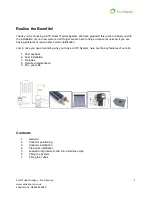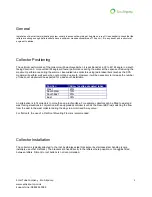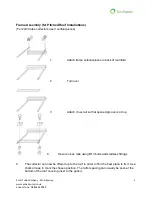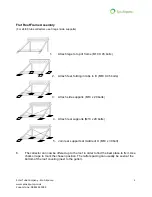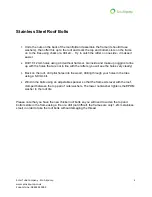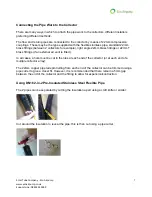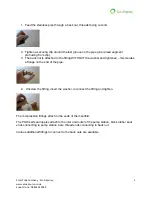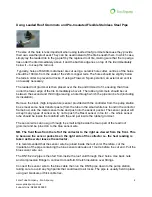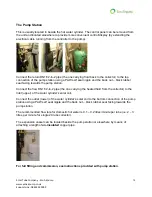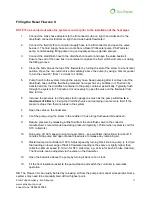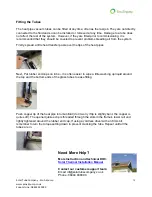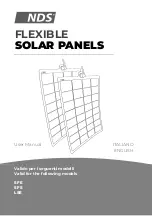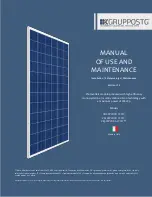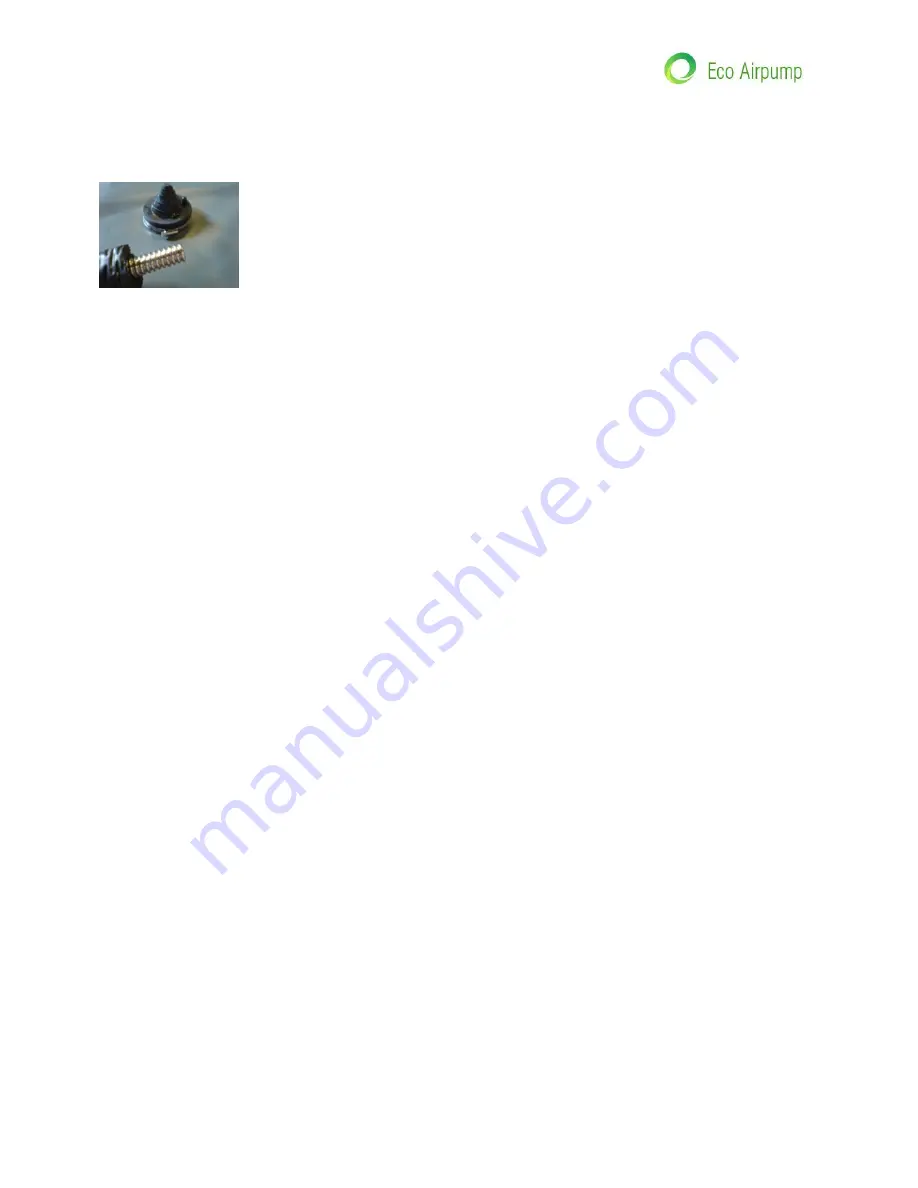
Installation G
Solar Tube Company - Eco Airpump
www.ecoairpump.co.uk
Support Line: 08444 930099
9
Using Leaded Roof Grommets and Pre-Insulated Flexible Stainless Steel Pipe
The size of the hole is less important when using leaded roof grommets because they provide
their own weatherproof seal. They can be used instead of the tile beneath them. In which case,
simply lay the leaded tile in the gap left by the replaced roof tile, making sure that the top edge
lies under the tile immediately above it and the bottom edge lies on top of the tile immediately
below it
– to keep the rain out.
Typically, holes of 60-80mm diameter are cut using a ceramic hole cutter, centres of the holes
should be 100mm from the ends of the 22mm copper tails. The holes should be slightly below
the tails in order to prevent air locks. If using a Flowcon S pump station; an exterior air vent is
not usually necessary.
The leaded roof grommet is then placed over the tile and trimmed to fit, ensuring that it lies
under the lower edge of the tile immediately above it. The rubber grommets should be cut
between the second and third ridge leaving a hole through which the pipe can be fed (including
its insulation).
Remove the black (high temperature) sensor provided with the controller from the pump station
box, smear some heat transfer paste (from the tube in the small white box found in the collector
frame box) onto the metal sensor tube and push into the sensor pocket. The sensor pocket will
accept many types of sensor so try not to push the Resol sensor in too far
– the whole sensor
tube should be inside the manifold with the end just inside the rubber grommet.
The sensor wire can now go through the small lump beside the main part of the lead roof
grommet and be joined on to the blue sensor wire.
NB. The fluid flows from the left of the collector to the right as viewed from the front. This
is because the sensor pocket is on the right side of the collector i.e. the heat reading is
taken as the water leaves the collector.
It is recommended that the sensor wire be joined inside the roof void. Therefore, cut the
insulation of the pipe containing the blue sensor cable about 1 metre before the cut end. Pull the
blue sensor wire out.
The DN16 2-in2 pipe is then fed from inside the roof void through the 2 holes. Use back nuts
and compression fittings to connect to manifold. Stretch insulation over fittings.
Connect the sensor wire to the blue cable then run the DN16 pipe down to the pump station,
taking care to avoid any high points that could lead to air locks. The pipe is usually held in place
using our brackets or thick cable ties.


